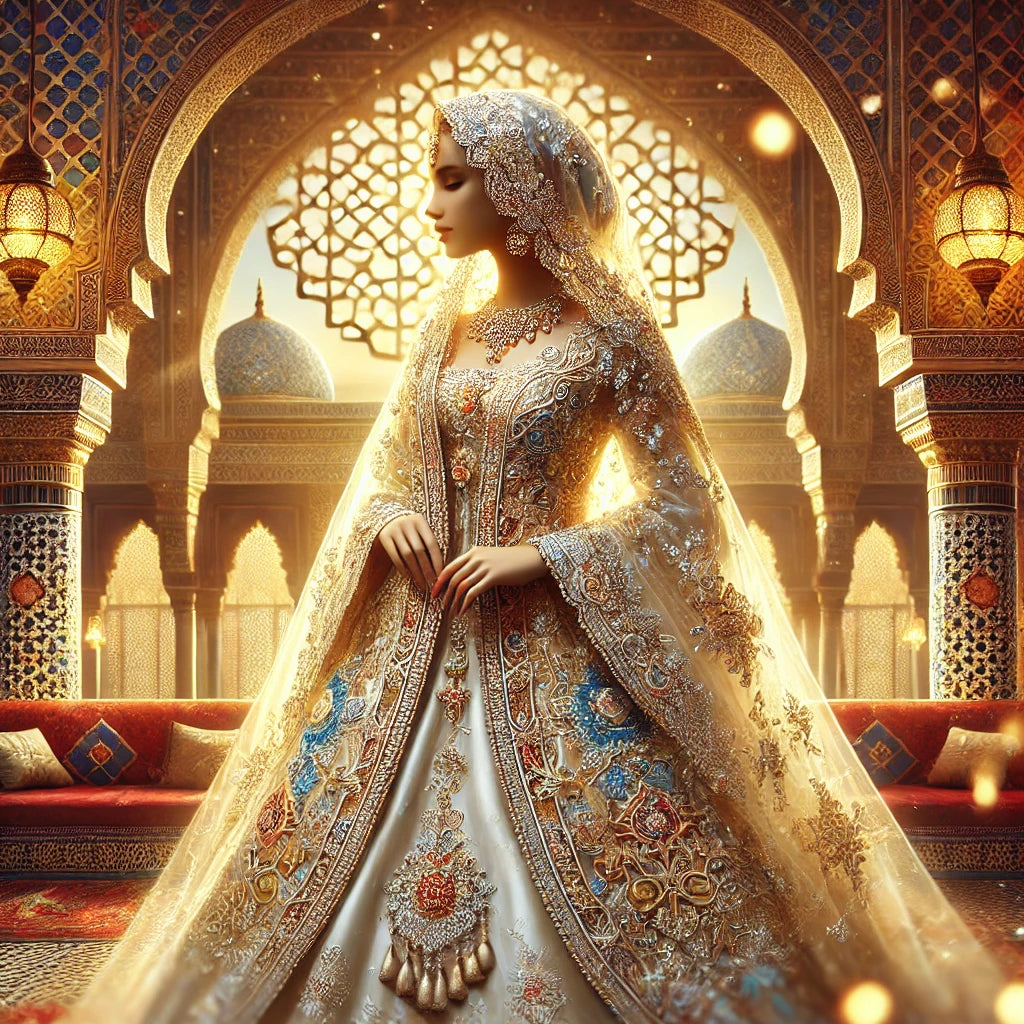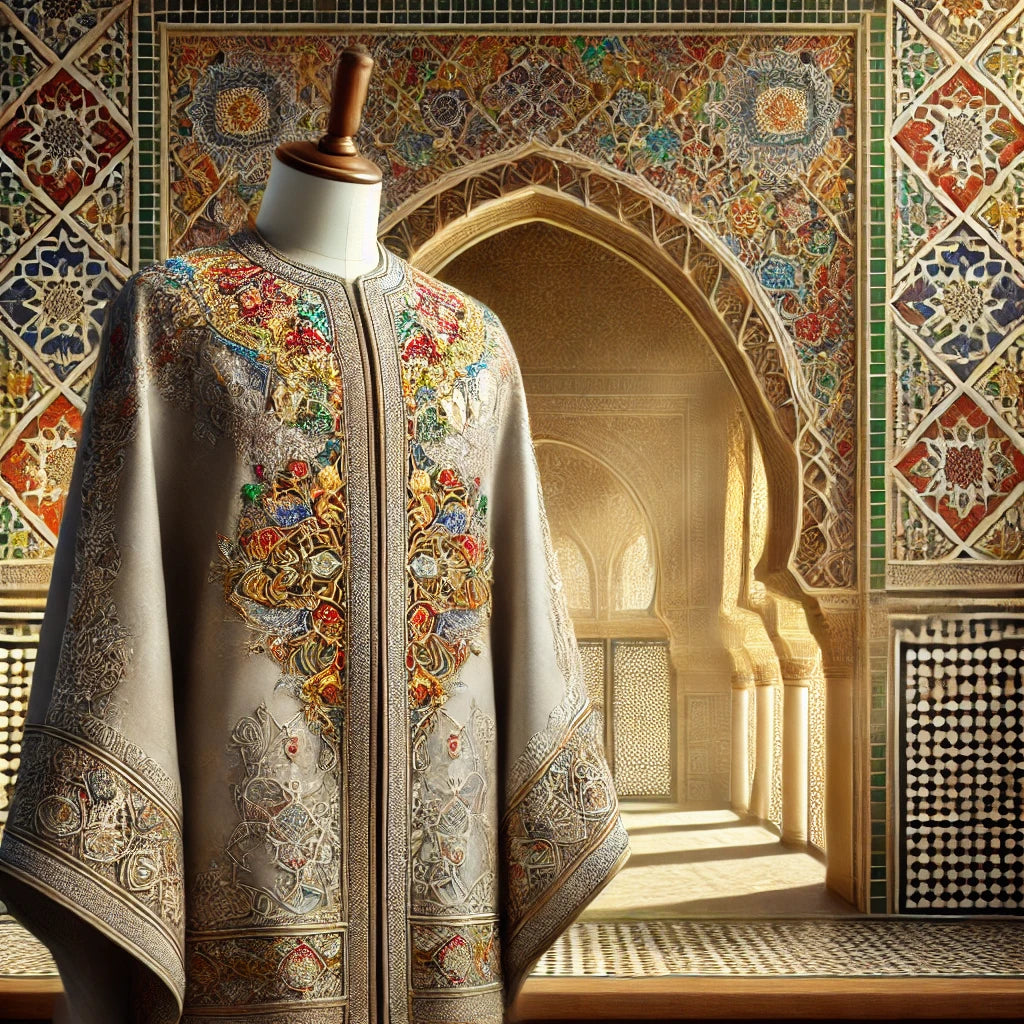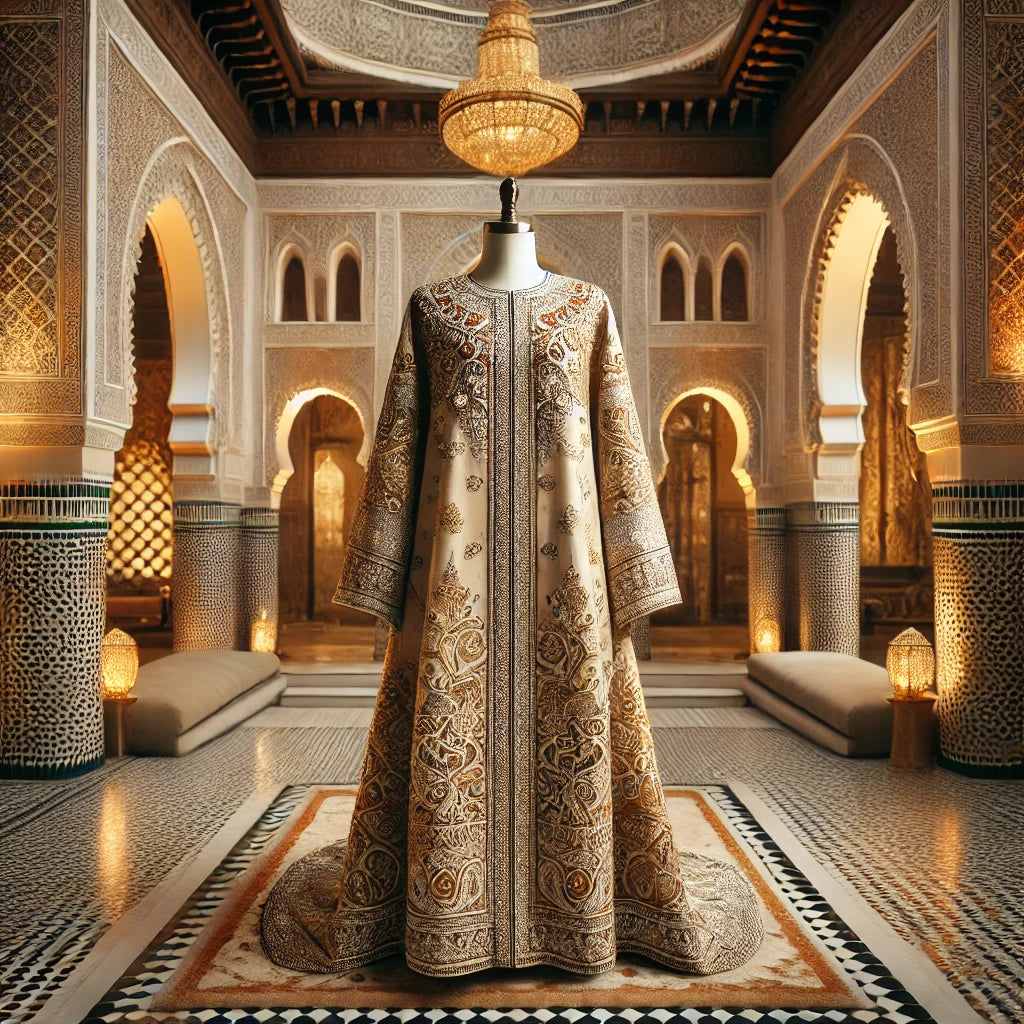
Which culture wears caftans?
The kaftan, a garment rich in symbolism and elegance, is much more than just an item of clothing. It embodies history, traditions, and expertise passed down from generation to generation. But which culture wears kaftans ? If you've ever asked yourself this question, the answer is as varied as it is fascinating. From North Africa to the Middle East, including parts of Asia and Europe, the kaftan has crossed borders to become a must-have piece.
Take Leila, a Moroccan bride who chose a traditional caftan for her ceremony, for example. By opting for a richly embellished piece, she paid homage to her roots while adding a modern touch to her look. This fusion of tradition and modernity perfectly illustrates how the caftan adapts to different cultures and eras.
If you too are inspired by this timeless outfit, explore our Wedding Caftan collection to discover models that combine refinement and authenticity.
The roots of the caftan
The caftan has a deep history rooted in several cultures, each bringing a unique touch to it.
Persian origins
Historically, the caftan dates back to ancient Persia, where it was worn by elites as a symbol of power and social status. Made of silk and adorned with embroidery, these garments were true works of art.
Example : At the time, Silk Road merchants carried sumptuous caftans, which were admired by nobles in Central Asia.
Discover our Wedding Caftan collection to be inspired by these historical designs.
Adoption by the Ottoman Empire
During the Ottoman Empire, the caftan gained popularity and was worn by sultans and dignitaries. Gold embroidery and precious fabrics were key elements of this garment.
The rise of the caftan in Morocco
In Morocco, the caftan has been adopted and transformed to reflect local traditions. With its distinctive embroidery and cut, it has become an essential item for special occasions.
Explore inspiring designs in our Wedding Caftan collection.
Cultures that still wear caftans today
Today, the caftan is worn in various cultures, each having adapted this garment to their customs and traditions.
Morocco and wedding caftans
In Morocco, the caftan is a must-have for weddings and other ceremonies. Colors, embroidery, and belts vary by region, offering an infinite variety of styles.
Example : Amina, a bride from Casablanca, wore a white and gold caftan for her wedding. This choice reflected both tradition and her personality.
Make your wedding unique with our Caftan Mariage collection.
Influences in North Africa
In Algeria and Tunisia, variations of the caftan are also worn, such as the gandoura or the djellaba, which share similarities with the Moroccan caftan.
The caftan in the modern world
Nowadays, the caftan has become international, becoming a popular outfit for fashion shows and cultural events.
Find modern inspiration in our Wedding Caftan collection.
Why the caftan remains timeless
The success of the caftan lies in its ability to adapt to times and tastes.
A symbol of tradition and modernity
The caftan is often passed down from generation to generation, while evolving to incorporate contemporary elements. This fusion makes it a unique garment.
Example : Sarah wore her grandmother's caftan to her henna party, after modernizing it with a beaded belt.
An outfit for every occasion
Whether it's for weddings, evenings or even professional events, the caftan knows how to adapt thanks to its diversity of styles.
The cultural impact of the caftan
Wearing a caftan is also a celebration of culture and heritage. Each embroidery, each pattern tells a story.
Explore these stories in our Wedding Caftan collection.



Leave a comment
This site is protected by hCaptcha and the hCaptcha Privacy Policy and Terms of Service apply.